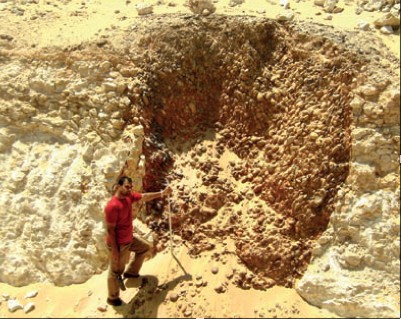Paleokarst shafts in the western desert of Egypt: A unique landscape
DOI:
https://doi.org/10.3986/ac.v42i1.631Abstract
Paleokarst shafts in the western desert of Egypt: A unique landscapeThe Eocene limestone plateau of the Western Desert of Egypt has various karst features, including shafts created during ancient wet periods. These Paleokarst shafts have been investigated on the plateau to the west of the Nile valley, specifically northwest of Assiut. Most of these shafts are infilled by conglomerate (cemented flint, red soil and limestone chips) and appear as pockets in limestone hills. The morphology of the shafts and the characteristics of their infillings suggest that they developed in vadose zone at the base of epikarst limits. This stage probably took place from the end of Early Eocene to the Middle Miocene. A later, different stage of water erosion occurred, most probably during Pliocene/Pleistocene period. This stage led to remove the epikarst zone, and reshaped the area to create a hilly landscape penetrated by infilled shafts.Keywords: Egypt, the Western Desert, karst, shafts, epikarst.Downloads
Download data is not yet available.

Downloads
Published
2013-09-20
How to Cite
Mostafa, A. (2013). Paleokarst shafts in the western desert of Egypt: A unique landscape. Acta Carsologica, 42(1). https://doi.org/10.3986/ac.v42i1.631
Issue
Section
Original papers
License
Authors guarantee that the work is their own original creation and does not infringe any statutory or common-law copyright or any proprietary right of any third party. In case of claims by third parties, authors commit their self to defend the interests of the publisher, and shall cover any potential costs.
More in: Submission chapter




